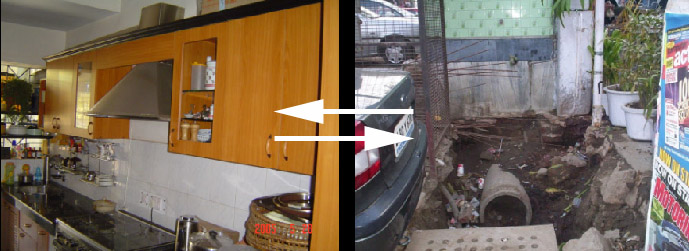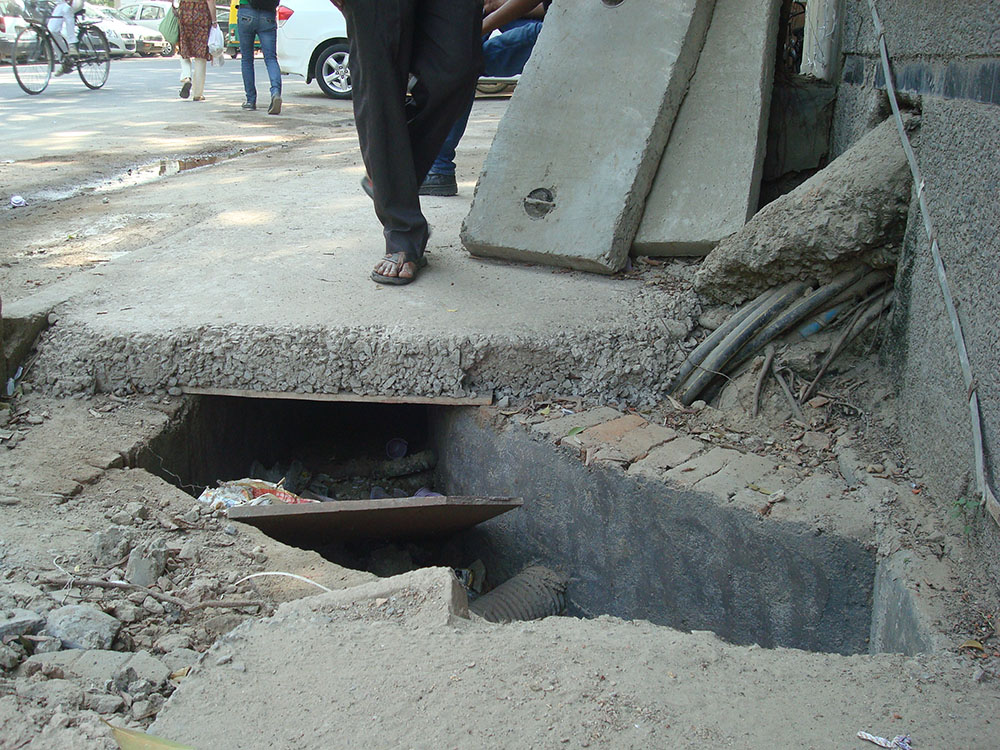The Power of Seeing: Humane Urban Design Project is based on the following observations:
We have been conditioned to overlook, accept or become inured to the chaos and ugliness that surrounds us in our cities. We no longer can do that, or else in not too distant a future our cities will come to a halt, caught in the gridlock of their own disorganization.
Below is a list of some of observations why our cities are a mess:
There is a glaring discrepancy between our insides and outsides, i.e. the insides of our homes and the streets outside. What we allow and accept outside on the streets in terms of design, construction, maintenance or repair would be absolutely unthinkable inside our homes. We know and understand design, skill and workmanship very well, yet there is very little evidence of it on our streets. This may be due a number of reasons, one being that we culturally consider the outside to be “impure and polluting,” and thus do not have any affinity with it, b) the opaqueness of the municipal agencies, and c) both a lack of municipal governance and the public’s faith in it. It is lack of faith in it.
Our cites are not made to be body-friendly! A pivotal point is that even in the age of ergonomics we do not make our cities by placing the body as a central point of reference, i.e. we do not regard the convenience, safety and comfort of the human body as central when we plan and design street elements. Most of our elements are derived and borrowed from the west, and are superimposed on our cityscapes not keeping in mind the ground reality and the need and requirements of the people. In that respect our urban design is disrespectful if not contemptuous of the human body.
The deeply entrenched class system which divides the haves from the have-nots plays a very significant role in the configuring of our cities. For the most part the pedestrians (i.e. the have-nots) literally have no place in our scheme of affairs. For the most part there are no pedestrian pavements and if there are they are often encroached upon, littered with garbage or obstructed with unorganized (legal or illegal) street elements. In short there is contempt for all those who may use the pavement, i.e. pedestrians, hawkers, vendors, service providers. Furthermore, the class hierarchy conditions us to believe that there is always someone else to pick-after-us, so we not only freely litter we don’t even pick up after our jobs on the streets, with the result every job done to fix the street is leaves behind a pile of debris that often never gets collected and in fact gets reabsorbed into the street destroying any definition between elements
We privilege positive space over negative space, i.e. we privilege built space over open space, or in other words privilege material over space. Therefore we tend to easily clutter and encroach upon space that is meant to be kept empty for free movement and manoeuvrability. Therefore it would not be inaccurate to say that we do not privilege movement! Our cites are progressively coming to a halt due to traffic gridlocks, because there is on one hand no attention to designing roads that facilitate free flow of traffic and on the other hand no check on acquisition of vehicles. Lack of attention to boundaries does not necessarily pertain to issues of encroachment alone where boundaries are disrespected and blatantly flouted, but applies as a general rule to both the boundaries between two elements as well as the definition of independent elements, e.g. there often is not a clear definition between a road/pavement and parking area, or else there might be no definition between a tile and the edge of the pavement etc. The haphazard division and ineffective knitting of the horizontal plane is what constitutes for the perpetual state of disarray and disrepair that are cites are in. Some of the primary reasons being varied plinth levels, ill definition between spaces and elements, random placement of street furniture including road signs, trees, poles, and more than anything else the ineffective if not the absence of adhesion between different elements. Our Motto:




